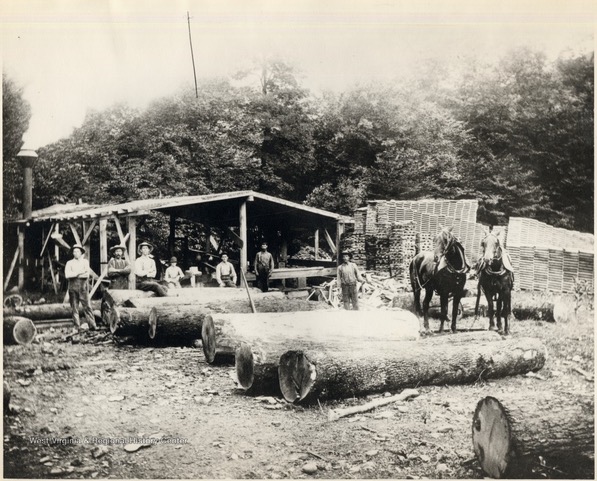Above is an artist’s depiction of a 19th century West Virginia sheep farm. An early account of sheep in West Virginia was made in 1770 by George Washington who passed a canoe on the Kanawha River that was transporting sheep to Illinois. Raised primarily for wool for clothing, sheep farming became an important part of West Virginia agriculture. In 1879, the West Virginia Sheep Breeders and Wood Growers Association was organized.
Greenbrier County, with 26,485 sheep in 1904, was the top county in West Virginia for sheep farming. There were nearly 10,000 more sheep than cattle. In 1898, the first Rambouillet sheep were brought to Greenbrier County from Missouri and bred to Shropshire rams. Rambouillet sheep originated in North Africa and were transported to Spain by the Moors. The Merino wool produced by the sheep was the finest in Europe and became an important export commodity for Spain. France was a major buyer of Merino wool. To reduce its dependency on Spain, France’s King Louis XVI began a breeding program on an experimental farm at Rambouillet, his estate. The breeding effort of Rambouillet sheep in Greenbrier County, produced sheep that were described as having “dense fleece and are hardy and of good constitution,” and “they are gentle, easy to take to the catching pen, good feeders and not breech.” Their mutton was described as being of “a very high order.”
About the same time as the Rambouillet sheep arrived, J.D. And H.B. Arbuckle of Lewisburg began raising Dorset sheep that originated in Dorset, England.
During a three-year test, the Arbuckles found the spring Dorset lambs weighed more than their Shropshire lambs. It is thought Dorset sheep were developed when Merino sheep were smuggled from Spain and bred with local sheep in England. Historians argue that the value of the Dorset sheep was not in its wool or meat, but from its dung that fertilized a particularly unfertilized area of England. While sheep farming is no longer the important endeavor it once was in Greenbrier County, our sheep may well be descendants from the early introduction of Rambouillet and Dorset sheep.
Drawing from Handbook of West Virginia, The Farms, Orchard and Gardens, The Forest, Mines and Factories (1904).
Sources: Handbook of West Virginia, American Rambouillet Sheep Breeders Association, Dorset Horn Sheep Breeders Association.



